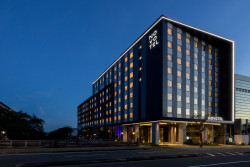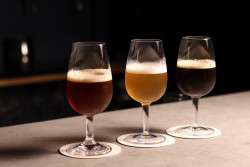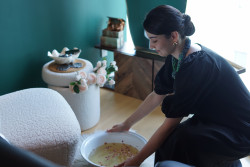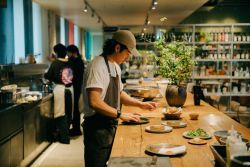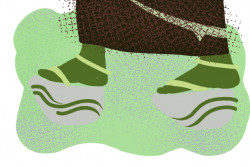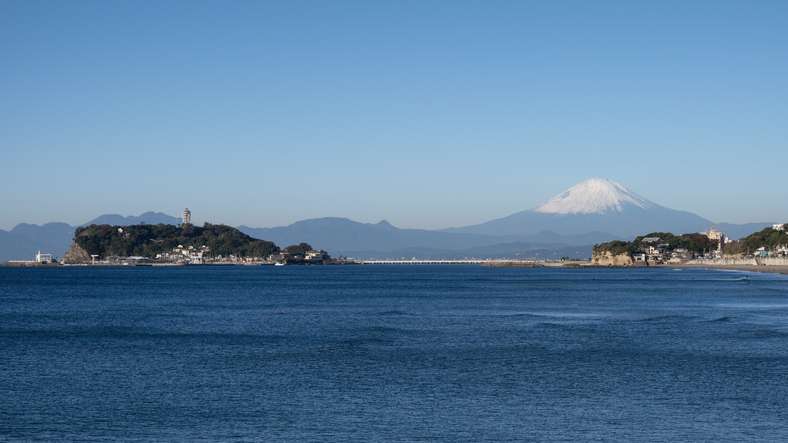
May 12, 2025
Tokyo Day Trip: Enoshima Caves, Shrines and Sea Views
Escape the city with a stunning Enoshima day trip
Tokyo may be a city of constant motion and tight corners, but it doesn’t take much effort to slip away and find space to breathe. Just an hour south by train, the island of Enoshima offers a perfect day trip from Tokyo: Think caves, coastal views, shrines and seafood—all compacted into less than half a square kilometer.
While technically part of Fujisawa, Enoshima has an identity all its own. Approaching the island via the Bentenbashi Bridge, it emerges from Sagami Bay like a storybook scene, famously captured in Hokusai’s prints. A full Enoshima day trip can include shrine pilgrimages, cafe stops, natural wonders and local delicacies.
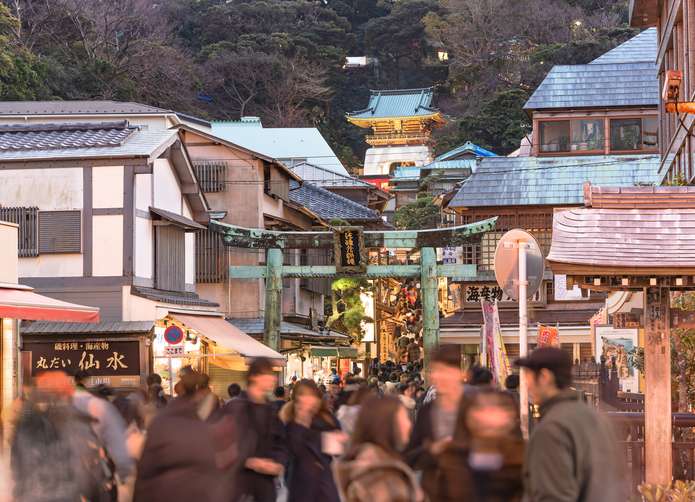
Discover Enoshima’s Mythical Origins
Legend says that Benzaiten, goddess of music and eloquence, descended from the heavens to tame a five-headed dragon terrorizing the Shonan Coast. Enchanted by her strength, the dragon proposed, but she refused. Instead, she raised Enoshima from the sea to make it her home. Depending on the version, she may have changed her mind—but the island remains a symbol of divine power and beauty.
You can visit three shrines dedicated to Benzaiten across the island: Hetsunomiya, Nakatsunomiya and Okutsunomiya. Local lore suggests that those who visit all three in sequence may have a wish granted. Just prepare for the stairs—Enoshima is famously steep.
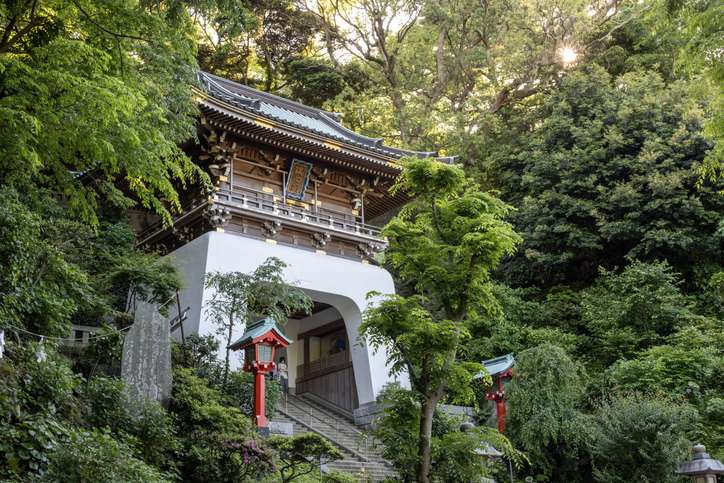
Stops and Seasonal Gardens
Samuel Cocking Garden sits atop the island, named after a British merchant who bought land there during the Meiji Period. The original greenhouse has long since burned down, but today the garden features seasonal flowers like winter tulips and other rotating blooms.
If visiting during the winter months, stick around after sunset for the seasonal illumination event at Samuel Cocking Garden. Thousands of lights transform the garden and Sea Candle tower into a colorful nighttime display, one of the area’s most photogenic winter events.
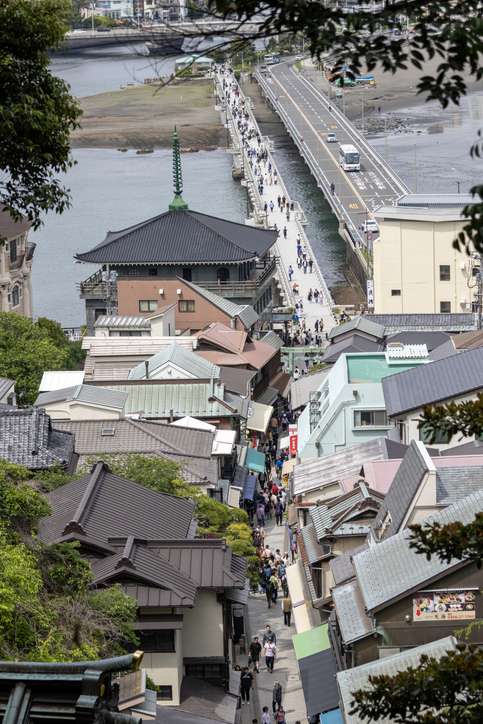
Nearby, the LON Cafe serves its well-known French toast on a renovated terrace overlooking the bay. It’s a favorite rest stop for anyone craving something sweet with a view.
Ring the Love Bell (With Caution)
Ryuren no Kane, the “love bell,” sits on a scenic bluff. Couples ring it together for eternal love—though the sound is loud enough to startle even the most devoted. A good spot for a photo (and earplugs).
Panoramic Views at the Sea Candle
The Sea Candle stands 60 meters above the island’s summit. For ¥500 (¥250 for kids, or free with the Enopass), you can take an elevator to the dual observation decks. Clear skies offer excellent views of the Shonan Coast and, if you’re lucky, Mt. Fuji.
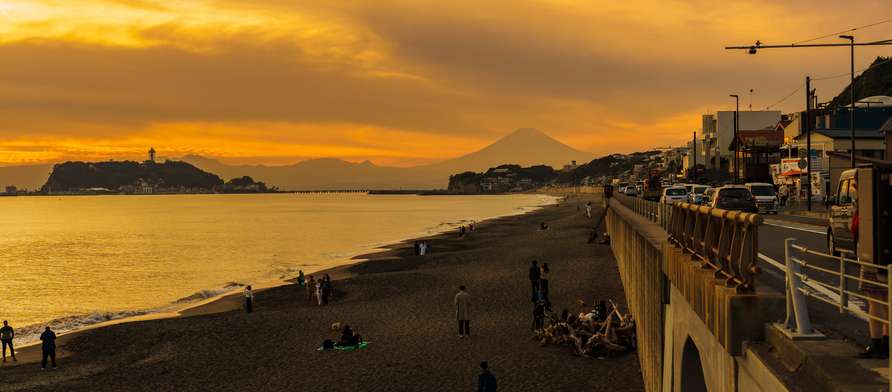
Visit the Power Spot of Iwaya Caves
On the far end of the island lies the Iwaya Caves. These twisting tunnels reach into the island’s bedrock, historically used for religious training. On calm days when the tide is low, head to the island’s rocky perimeter near the caves to explore natural tide pools. You’ll find small crabs, fish, and sea plants along the shore—just watch your step, as the rocks can be slippery.

Where to Eat on Enoshima
There are food stalls and restaurants throughout the island, especially along Nakamise Street and near the caves on Oiwayamichi. One standout is Enoshimatei, which serves shirasudon—tiny sardines over rice—alongside sashimi and tempura set meals.
Another great spot is Tousha Coffee & Teishoku, a cozy and modern cafe serving seasonal teishoku (set meals), specialty coffee and homemade desserts. In the summer, they also offer handmade kakigori (shaved ice) with seasonal fruit syrups. It’s tucked away on the quieter side of the island and makes a perfect stop for a relaxed lunch or afternoon break.
There are plenty of street foods as well:
- Ika-yaki – Grilled whole squid on a stick, brushed with a sweet-savory soy-based glaze.
- Ebi-senbei – Pressed shrimp crackers made from whole shrimp, flattened and cooked between hot iron plates until crispy and slightly chewy.
- Tako-senbei – Similar to ebi-senbei, but using whole octopus flattened between iron plates. Chewy, crunchy and highly photogenic.
- Tako-tamago – Quail egg stuffed inside a tiny whole octopus, skewered and grilled or boiled. Sweet and savory with a fun texture contrast.
- Matcha Soft Cream – Smooth green tea-flavored soft serve, often sold at local shops near the shrine and garden area.

Enoshima Aquarium
Located just before the bridge to the island, Enoshima Aquarium is a popular stop for families and marine life lovers. It showcases native sea life from Sagami Bay, including a jellyfish fantasy hall and dolphin performances. The aquarium also features displays about the area’s unique coastal environment and seasonal exhibits.
Getting to Enoshima
The Enoshima 1-day pass for ¥1,100 offers access to the island’s escalators, the Sea Candle observatory, Samuel Cocking Garden and Iwaya Caves. The Odakyu Limited-Express Romancecar train connects Tokyo with Enoshima, Kamakura and Hakone. From Shinjuku it’s only 65 minutes to Enoshima.
For more day trip ideas from Tokyo, check out our other guides:
Tokyo Neighborhood Guide: A Day Trip to Okutama
Kawagoe Day Trip: Historic Streets, Sweet Shops and Edo-Era Charm

